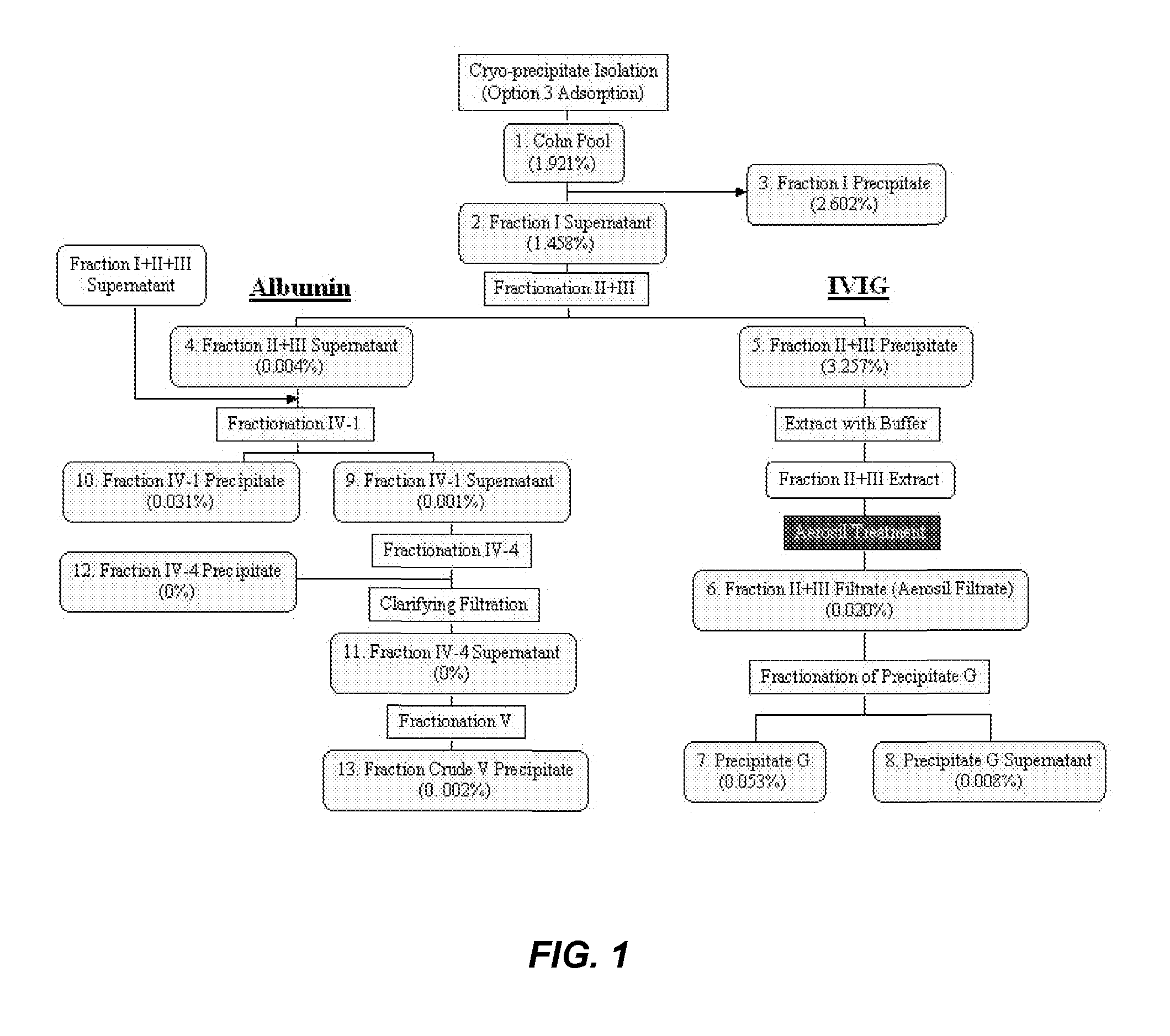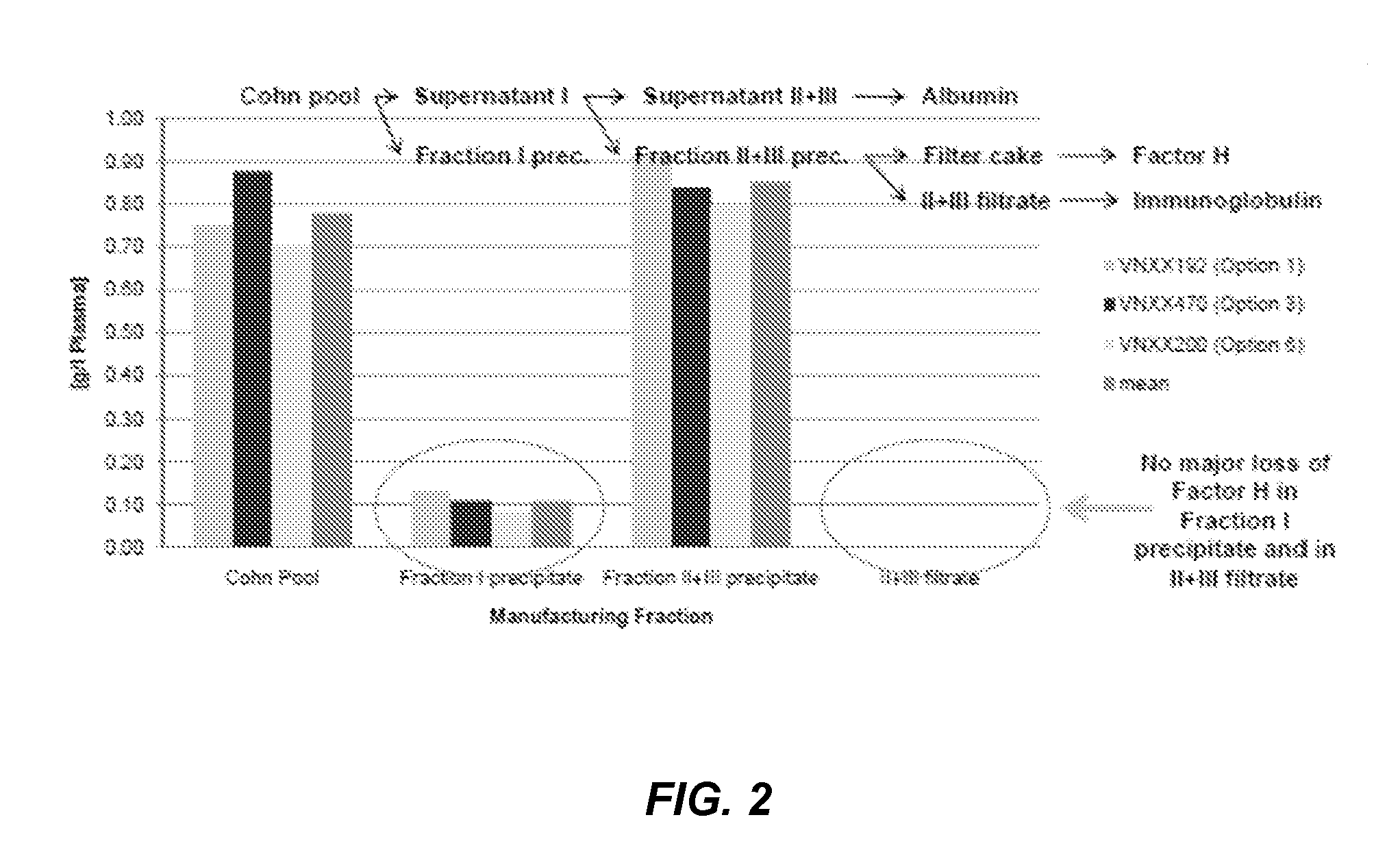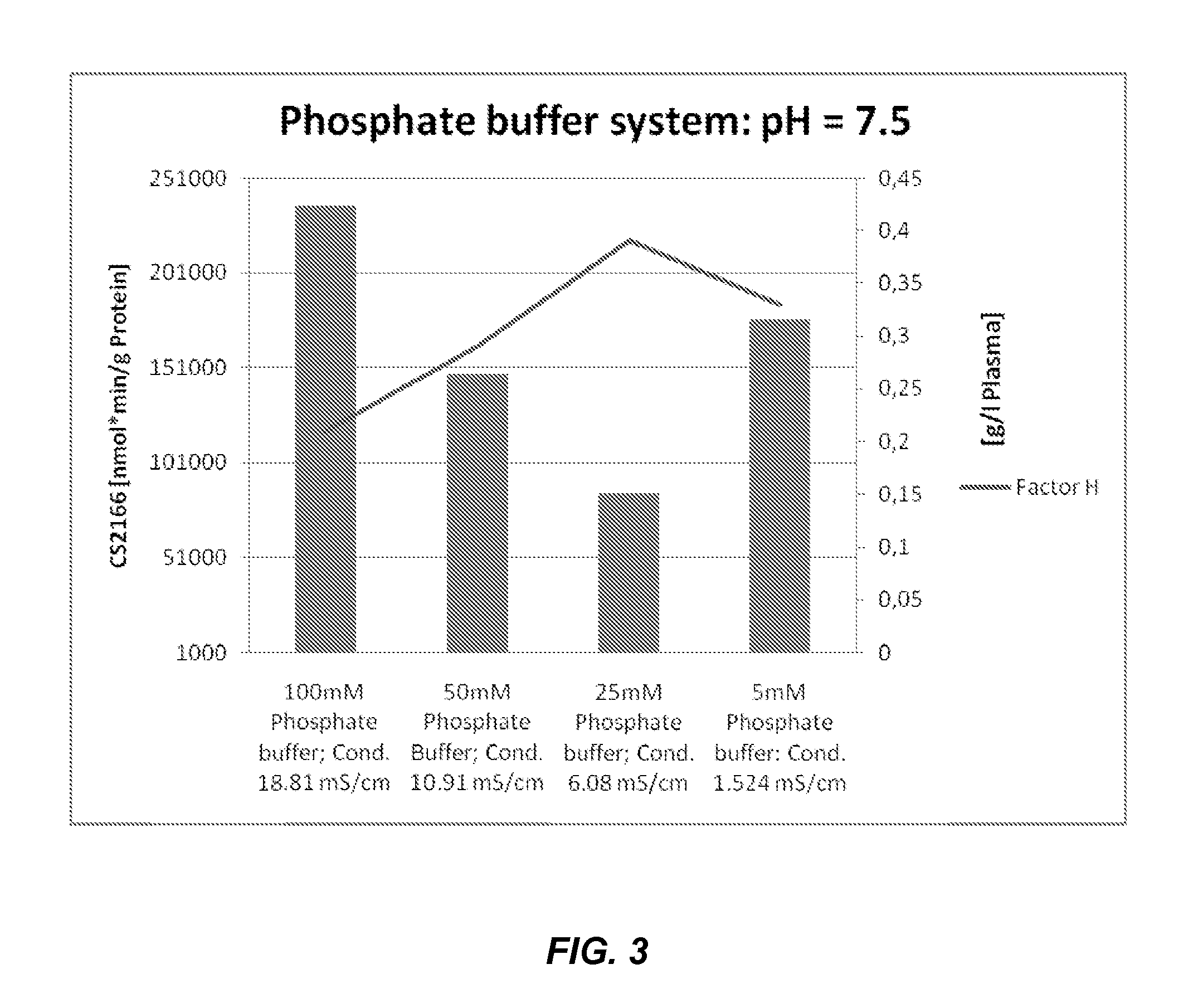Removal of serine proteases by treatment with finely divided silicon dioxide
a technology of silicon dioxide and serine proteases, which is applied in the direction of antibody medical ingredients, separation processes, immunological disorders, etc., can solve the problems of unwanted thromboembolic events and reduce serine protease activity
- Summary
- Abstract
- Description
- Claims
- Application Information
AI Technical Summary
Benefits of technology
Problems solved by technology
Method used
Image
Examples
example 1
[0530]In order to determine the residual serine protease content and activity present in plasma-derived protein compositions, the amidolytic activity profile was determined for two commercially available IgG preparations that were manufactured without the use of SiO2 treatment: OCTAGAM® (5% Intravenous Immune Globulin; Octapharma) and Subcuvia (16% Subcutaneous Immune Globulin; Baxter); two lots of a commercially available IgG preparation manufactured using SiO2 treatment: Gammagard Liquid (10% Intravenous Immune Globulin; Baxter), and a Factor H purification method currently in development. Notably, the Factor H composition was purified as described above, by binding and subsequently eluting Factor H from finely divided SiO2.
[0531]Briefly, the amidolytic activity profile for each of the plasma-derived protein compositions was determined by assaying with the following chromogenic substrates with different enzyme specificities: PL-1 (broad spectrum), S-2288 (broad spectrum), S-2266 (...
example 2
[0532]To determine an economically beneficial scheme for the manufacture of Factor H from a plasma sample, which allows for the recovery of additional blood factors from the same plasma sample, a lot of pooled human plasma was subjected to fractionation according to the scheme outlined in the flow-diagram shown in FIG. 1. As shown in FIG. 2, the majority of Factor H (about 90%) present in a human plasma cryo-poor Cohn pool can be found in the fraction II+III precipitate. A smaller, yet significant, amount of Factor H (about 10%) can also be found in the fraction I precipitate. This is consistent with the results shown in PCT Publication No. WO 2011 / 011753, the contents of which are hereby incorporated by reference in their entirety for all purposes.
[0533]Factor H was extracted from the finely divided SiO2 filter cake byproduct formed as a) result of filtering the “Aerosil Treatment” composition directly upstream of composition 6, the “Fraction II+III Filtrate,” by re-circulating a F...
example 3
[0540]In order to show the capability of removing amidolytic activity from a plasma-derived protein composition, re-suspended Cohn Fraction II+III precipitates were treated with finely divided silicon dioxide (SiO2). Briefly, pooled cryo-poor human plasma was fractionated according to the IgG purification scheme described herein, to provide a Fraction II+III precipitate. The fraction II+III precipitate was re-suspended in low conductivity extraction buffer (pH 5.1±0.2; ˜0.8 mS / cm) at a temperature maintained between 0° C. and 8° C. Aerosil® 380 (Evonik Industries AG) was added to a final concentration of between 40 and 60 g / kg II+III precipitate. After the additional of CELPURE® C300 filter aid (Advanced Minerals Corporation) to a final concentration of 0.5 kg / kg II+III precipitate, the suspension was filtered using a depth filter. The immunoglobulin composition in the filtrate was then tested for FXI zymogen content. As shown in Table 22, treatment of the fraction II+III suspension...
PUM
 Login to View More
Login to View More Abstract
Description
Claims
Application Information
 Login to View More
Login to View More - R&D
- Intellectual Property
- Life Sciences
- Materials
- Tech Scout
- Unparalleled Data Quality
- Higher Quality Content
- 60% Fewer Hallucinations
Browse by: Latest US Patents, China's latest patents, Technical Efficacy Thesaurus, Application Domain, Technology Topic, Popular Technical Reports.
© 2025 PatSnap. All rights reserved.Legal|Privacy policy|Modern Slavery Act Transparency Statement|Sitemap|About US| Contact US: help@patsnap.com



